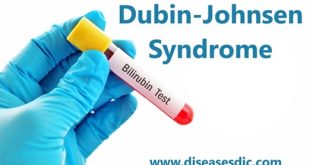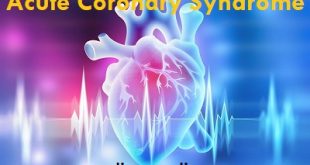Overview
Deep vein thrombosis (DVT) occurs when a blood clot (thrombus) forms in one or more of the deep veins in the body, usually in the legs. Deep vein thrombosis can cause leg pain or swelling. Sometimes there are no noticeable symptoms.
You can get DVT if you have certain medical conditions that affect how the blood clots. A blood clot in the legs can also develop if you don’t move for a long time. For example, you might not move a lot when traveling a long distance or when you’re on bed rest due to surgery, an illness or an accident.
Deep vein thrombosis can be serious because blood clots in the veins can break loose. The clots can then travel through the bloodstream and get stuck in the lungs, blocking blood flow (pulmonary embolism). When DVT and pulmonary embolism occur together, it’s called venous thromboembolism (VTE).
Pathophysiology of DVT
Lower extremity DVT most often results from
- Impaired venous return (eg, in immobilized patients)
- Endothelial injury or dysfunction (eg, after leg fractures)
- Hypercoagulability
Upper extremity DVT most often results from
- Endothelial injury due to central venous catheters, pacemakers, or injection drug use
Upper extremity DVT occasionally occurs as part of superior vena cava (SVC) syndrome (compression or invasion of the superior vena cava by a tumor and causing symptoms such as facial swelling, dilated neck veins, and facial flushing) or results from a hypercoagulable state or subclavian vein compression at the thoracic outlet. The compression may be due to a normal or an accessory first rib or fibrous band (thoracic outlet syndrome) or occur during strenuous arm activity (effort thrombosis, or Paget-Schroetter syndrome, which accounts for 1 to 4% of upper extremity DVT cases).
Deep venous thrombosis usually begins in venous valve cusps. Thrombi consist of thrombin, fibrin, and red blood cells with relatively few platelets (red thrombi); without treatment, thrombi may propagate proximally or travel to the lungs.
DVT Causes
Anyone can develop DVT, but it becomes more common over the age of 40. As well as age, there are also some other risk factors, including:
- Having a history of DVT or pulmonary embolism
- Having a family history of blood clots
- Being inactive for long periods – such as after an operation or during a long journey
- Blood vessel damage – a damaged blood vessel wall can result in the formation of a blood clot
- Having certain conditions or treatments that cause your blood to clot more easily than normal – such as cancer (including chemotherapy and radiotherapy treatment), heart and lung disease, thrombophilia and Hughes syndrome
- Being pregnant – your blood also clots more easily during pregnancy
- Being overweight or obese
The combined contraceptive pill and hormone replacement therapy (HRT) both contain the female hormone oestrogen, which causes the blood to clot more easily. If you’re taking either of these, your risk of developing DVT is slightly increased.
Who is more likely to get DVT?
A DVT is more likely to happen if you:
- Are over 60
- Are overweight
- Smoke
- Have had DVT before
- Take the contraceptive pill or HRT
- Have cancer or heart failure
- Have varicose veins
There are also some temporary situations when you’re at more risk of DVT. These include if you:
- Are staying in or recently left hospital – especially if you cannot move around much (like after an operation)
- Are confined to bed
- Go on a long journey (more than 3 hours) by plane, car or train
- Are pregnant or if you’ve had a baby in the previous 6 weeks
- Are dehydrated
Sometimes DVT can happen for no obvious reason.
What are the symptoms of deep vein thrombosis?
A DVT usually forms in the veins of your legs or arms. Up to 30%of people with a DVT don’t have symptoms, but sometimes the symptoms are very mild and may not raise concern. The symptoms associated with an acute DVT include:
- Swelling of your leg or arm (sometimes this happens suddenly).
- Pain or tenderness in your leg or arm (may only happen when standing or walking).
- The area of your leg or arm that’s swollen or hurts may be warmer than usual.
- Skin that’s red or discolored.
- The veins near your skin’s surface may be larger than normal.
- Abdominal pain or flank pain (when blood clots affect the veins deep inside your abdomen).
- Severe headache (usually of sudden onset) and/or seizures (when blood clots affect the veins of your brain).
Some people don’t know they have a DVT until the clot moves from their leg or arm and travels to their lung. Symptoms of acute PE include chest pain, shortness of breath, cough with blood, lightheadedness and fainting.
It’s important to call your doctor right away or go to the emergency room if you have symptoms of a DVT. Don’t wait to see if your symptoms go away. Get treatment right away to prevent serious complications.
Complications
A major complication of DVT is a pulmonary embolism. You can develop a pulmonary embolism if a blood clot moves to your lungs and blocks a blood vessel.
This can cause serious damage to your lungs and other parts of your body. Get immediate medical help if you have signs of a pulmonary embolism. These signs include:
- Dizziness
- Sweating
- Chest pain that gets worse with coughing or inhaling deeply
- Rapid breathing
- Coughing up blood
- Rapid heart rate
Diagnosis of Deep Vein Thrombosis
If a person suspects that they may have DVT, they should seek immediate medical attention. The doctor will ask questions about symptoms and medical history before carrying out a physical examination.
A doctor will usually not be able to diagnose DVT through symptoms alone and may recommend tests, including:
D-dimer test: D-dimer is a protein fragment that is present in blood after a blood clot fibrinolysis degrades a blood clot. A test result revealing more than a certain amount of D-dimer indicates a possible blood clot. However, this test may not be reliable in individuals with certain inflammatory conditions and after surgery.
Ultrasound: This type of scan can detect clots in veins, alterations in blood flow, and whether the clot is acute or chronic.
Venogram: A doctor may request this scan if the ultrasound and D-dimer tests do not provide enough information. The doctor injects a dye into a vein in the foot, knee, or groin. X-ray images can track the dye as it moves to reveal the location of a blood clot.
Other imaging scans: MRI and CT scans may highlight the presence of a clot. These scans may identify blood clots while testing for other health conditions.
Treatment of Deep Vein Thrombosis
There are three main goals to DVT treatment.
- Prevent the clot from getting bigger.
- Prevent the clot from breaking loose and traveling to the lungs.
- Reduce the chances of another DVT.
DVT treatment options include:
- Blood thinners. These medicines, also called anticoagulants, help prevent blood clots from getting bigger. Blood thinners reduce the risk of developing more clots.
Blood thinners may be taken by mouth or given by IV or an injection under the skin. There are many different types of blood-thinning drugs used to treat DVT. Together, you and your health care provider will discuss their benefits and risks to determine the best one for you.
You might need to take blood thinner pills for three months or longer. It’s important to take them exactly as prescribed to prevent serious side effects.
People who take a blood thinner called warfarin (Jantoven) need regular blood tests to monitor levels of the drug in the body. Certain blood-thinning medications are not safe to take during pregnancy.
- Clot busters (thrombolytics). These drugs are used for more-serious types of DVT or PE, or if other medications aren’t working.
Clot busters are given by IV or through a tube (catheter) placed directly into the clot. They can cause serious bleeding, so they’re usually only used for people with severe blood clots.
- Filters. If you can’t take medicines to thin your blood, a filter may be placed into a large vein — the vena cava — in your belly (abdomen). A vena cava filter prevents clots that break loose from lodging in the lungs.
- Support stockings (compression stockings). These special knee socks help prevent blood from pooling in the legs. They help reduce leg swelling. Wear them on your legs from your feet to about the level of your knees. For DVT, you typically wear these stockings during the day for a few years, if possible.
Can I Prevent DVT?
Simple lifestyle changes may help lower your odds of getting one. Try these simple tips to keep your blood circulating the way it should:
- Take care of yourself. Stop smoking, lose weight, and get active.
- Get regular check-ups. And if your doctor has prescribed a medicine to control a health problem, take it as directed.
- Don’t sit for too long. If you’re traveling for 4 hours or more, take breaks to flex and stretch your lower leg muscles. If you’re on a flight, walk up and down the aisle every hour. On long car drives, pull over every 2 hours to stretch. Wear loose-fitting clothes, and drink plenty of water.
- Plan surgery after-care. Talk to your doctor about what you can do to prevent DVT after surgery. They might suggest you wear compression stockings or take blood thinners. You’ll also want to get out of bed and start moving around.
 Diseases Treatments Dictionary This is complete solution to read all diseases treatments Which covers Prevention, Causes, Symptoms, Medical Terms, Drugs, Prescription, Natural Remedies with cures and Treatments. Most of the common diseases were listed in names, split with categories.
Diseases Treatments Dictionary This is complete solution to read all diseases treatments Which covers Prevention, Causes, Symptoms, Medical Terms, Drugs, Prescription, Natural Remedies with cures and Treatments. Most of the common diseases were listed in names, split with categories.







